Free Shipping on orders of $49+ | Signup for Direct Rewards
Free Shipping on orders of $49+ | Free Store Pickup | Signup for Direct Rewards
Free Shipping on orders of $49+ | Signup for Direct Rewards
Free Shipping on orders of $49+ | Free Store Pickup | Signup for Direct Rewards

Exploring the underwater world has never failed to amaze divers no matter how many dives they’ve been on. With thousands of different species, there will always be something new to see. The adaptation and evolution that marine species have gone through to survive in their environment for millions of years has given us some beautifully unique creatures. Aquatic evolution has provided us with creatures coming in all shapes and sizes. From rays and sharks, to jellyfish and seahorses, the possibilities are endless. Some of these sea creatures however, have evolved with the use of venom. There are quite a few creatures that you may want to avoid in the water. So we’ve compiled a list of the top 10 venomous species in no particular order that you will want to avoid while diving or enjoying another bright, sunny day at the beach.
Starting off our list, we have Fire Coral which can be found in tropical waters, including the lovely Florida waters that we call home. Fire Coral encounters are common and a sting from Fire Coral is a very common occurrence among divers with poor buoyancy control.
Fire Corals usually have a yellowish-brown branching formation. However, their appearance greatly varies depending on where they grow. In some cases, they can grow flatter and look more like rocks. Although Fire Coral does have a calcareous structure, they are not actually true coral. They are hydrozoans which are more closely related to Portuguese man-o-wars. Fire Coral gets its name thanks to the fiery sensation that you will experience if you come into contact with it. A skin rash can appear within a few minutes, or up to several hours after contact. Typically, the rash will disappear within a day or two, but it can take longer.
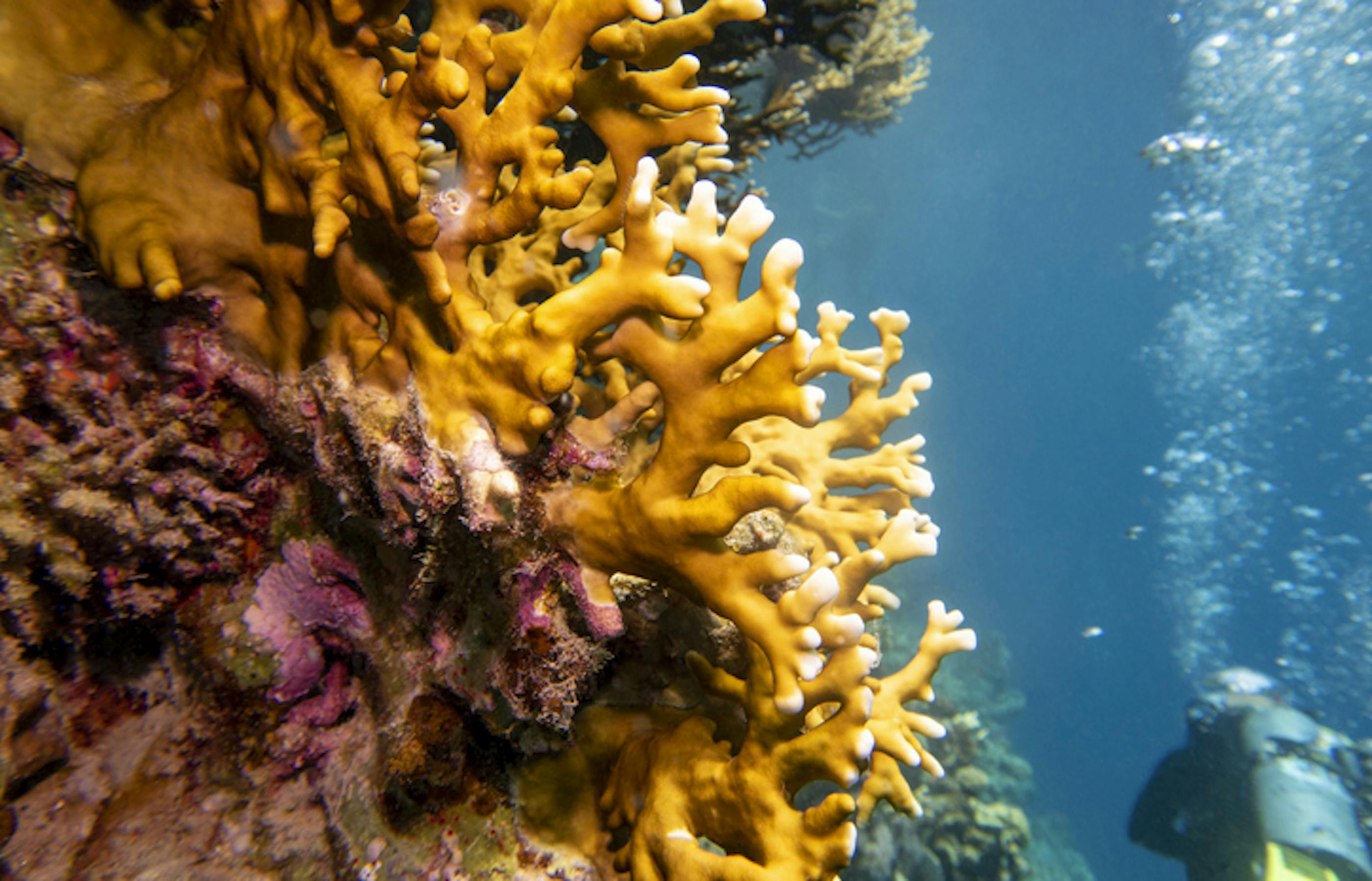
Lionfish are renowned around the world for their colorful stripes and beautiful fan-like fins. But that beauty packs a punch. Lionfish are known for their beautiful array of fins that they use to corner prey against the reef. These mesmerizing fins though are actually sharp, venomous spines covered by a sheath.
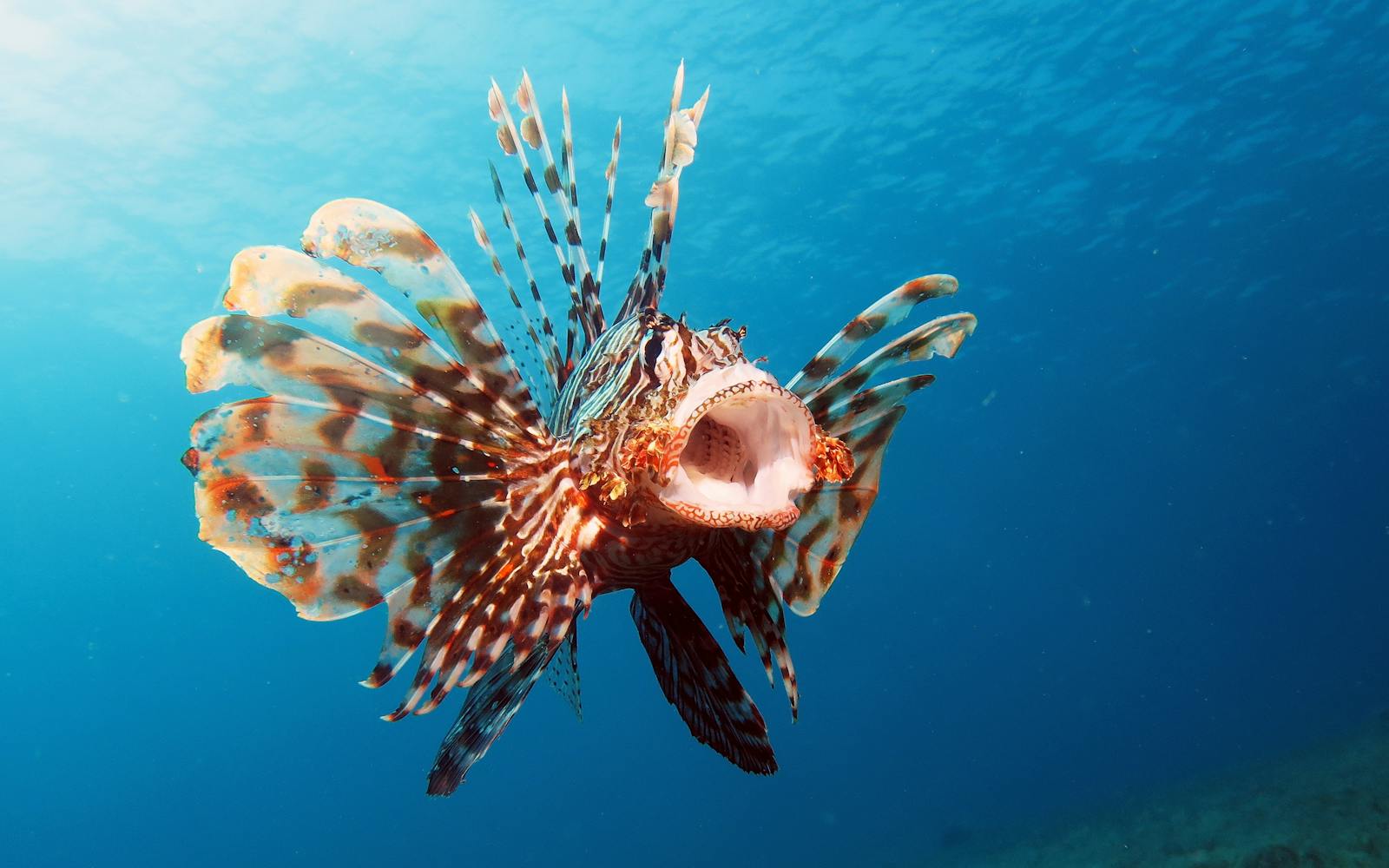
Lionfish have 18 venomous spines that won’t kill you, but will definitely cause extreme pain. If you come into contact with one of these spines and feel like you are having an allergic reaction or are going into shock, you must seek medical attention immediately. Its venom is a neuromuscular toxin similar to cobra venom. But like most of the species on this list, stings are typically accidental. If you are stung by a lionfish, you should soak your wound in hot water to help neutralize the venom, keep the wound clean, and keep a close eye to make sure it doesn’t get worse. The best way to avoid getting stung by a lionfish is to just observe them from a safe distance when diving.
Another venomous creature that isn’t quite what it seems is the Portuguese man-o-war. Commonly called a jellyfish, this venomous creature is actually a species of siphonophore. A siphonophore is composed of genetically identical individuals that live together to form a whole. Portuguese man-o-wars are found mostly in tropical waters. They float around the waters using a gas filled bladder, topped by a vertical membrane that serves as a sail.
What makes Portuguese man-o-wars so dangerous are their tentacles that dangle beneath them. These tentacles grow to an average of 30 ft (10 m) long, reaching lengths of up to 165 ft (50 m) long. The tentacles contain nematocysts to deliver venom, paralyzing its prey and even killing smaller organisms such as fish and crustaceans. The sting is rarely lethal to humans, but the pain can be quite excruciating. Portuguese man-o-wars reach full maturity in the summer, which is when their venom is most powerful. Make sure you read your local signage and keep an eye out when you’re at the beach or on the water. It is possible that you may have seen a dead man-o-war on the beach, and thought to touch it or dispose of it. Do not do this! Their tentacles can sting even after they have died.
If you are stung, you can use vinegar to inactivate the stinging cells. Do not use ammonia, urine, or rubbing alcohol to care for the sting. They can all cause the stingers to release even more venom. Apply vinegar, rinse with salt water (not freshwater), and then apply heat to the affected area to neutralize the already injected venom. If you don’t have access to vinegar, you can carefully scrape off the stingers using something like a credit card.
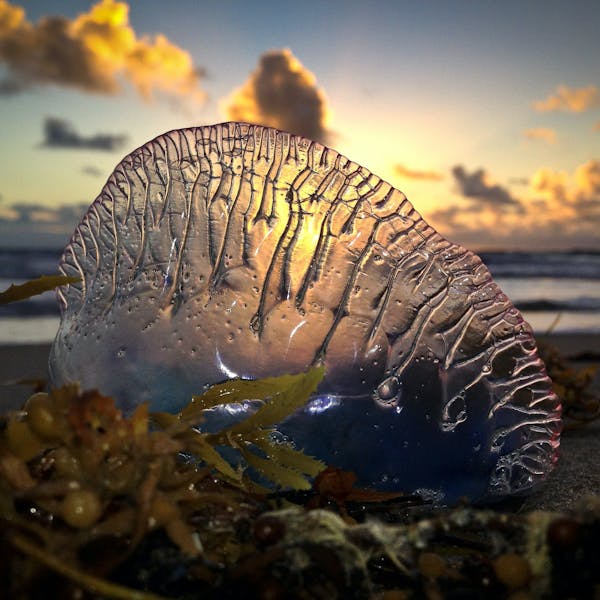
Stingrays are one of the most common stings that humans can come into contact with. Rays are known to bury themselves into the seafloor to hide from predators. However, this also results in them being hidden from unsuspecting humans wading in the water.
Stingrays are one of the most common stings that humans can come into contact with. Rays are known to bury themselves into the seafloor to hide from predators. However, this also results in them being hidden from unsuspecting humans wading in the water. If you happen to step on a stingray hiding on the seafloor, it will whip its tail around and sting you with its venomous spine. Depending on the species of ray, the spine can be barbed or serrated. Some species can even have more than one spine. Similar to a lionfish, these spines are covered by a sheath that is moved back if the spine is inserted. The underside of the spine is where the venom is stored, and it can be fatal to humans in some cases.
There are over 200 species of rays worldwide. Some of the most venomous stingrays are the Bluespotted stingray which is native to the Indo-Pacific and the Southern stingray which is native to the southeastern US. If you are ever stung by any species of stingray, hot water can help neutralize the venom. But you should always seek immediate medical attention.
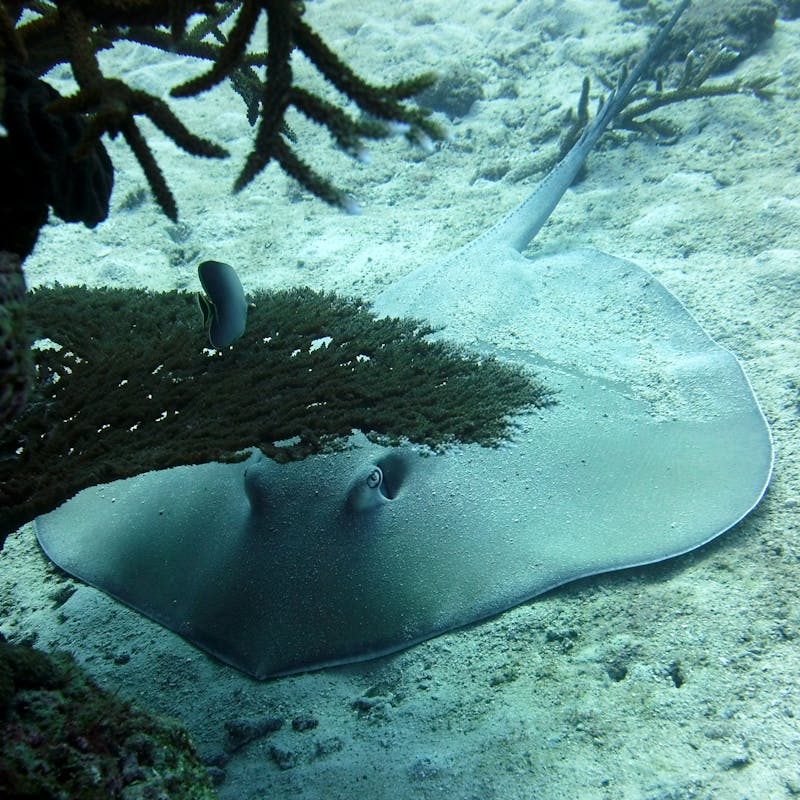
Stonefish are the most venomous fish on Earth. Excellent at camouflage, Stonefish will bury themselves in the sand, or find a suitable place where they can blend in to ambush their prey.
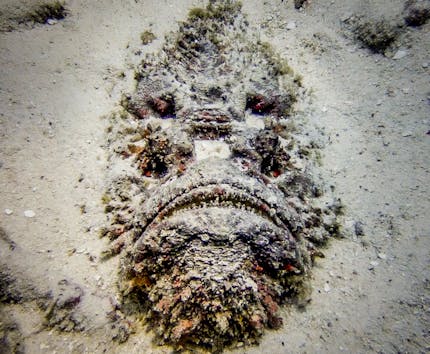
Once their prey swims above them, they open their jaws creating a vacuum, and catch their prey in less than one-hundredth of a second. But that’s not what we need to worry about as humans. Stonefish are armed with 18 spines, 13 of which are extremely venomous. Victims of stonefish are typically individuals who accidentally step on one while wading in the shallows. If you aren’t specifically looking for them, they can be almost impossible to spot. Their spines are so sharp, they can even pierce through soft sandals. Stepping on a stonefish will definitely ruin your day, and possibly your life. The stings result in horrific pain and swelling, and in some cases, they can cause paralysis, heart failure, and even death. This intense pain can last for weeks, and it can take months to fully recover from a sting. To avoid this unforeseen fate, you can shuffle your feet to help avoid stepping on one just like avoiding stingrays.
You can find sea urchins in every body of salt water around the world. They can be found on rocky reefs or sandy bottoms, so divers must always be careful of stepping on them in shallow water. Sea urchins that live on coral reefs will hide in crevices during the day, and then venture out at night to feed on floating plankton and algae. But as you can probably guess, they’re not swimming about trying to attack you. Sea urchin injuries, like many other aquatic life injuries, are due to a divers accident. Divers can step on sea urchins or brush up against them while exploring a reef. Different species of sea urchins can have very different spines. Some may have short and stubby spines, while others can have long, sharp spines. The species with razor-sharp spines can even pierce through a diver's thick wetsuit. These spines can inject a powerful venom that can cause severe muscle spasms, faintness, difficulty breathing, and even death. So as a diver, you should always watch out for spines that protrude through the sand or crevices of reefs.
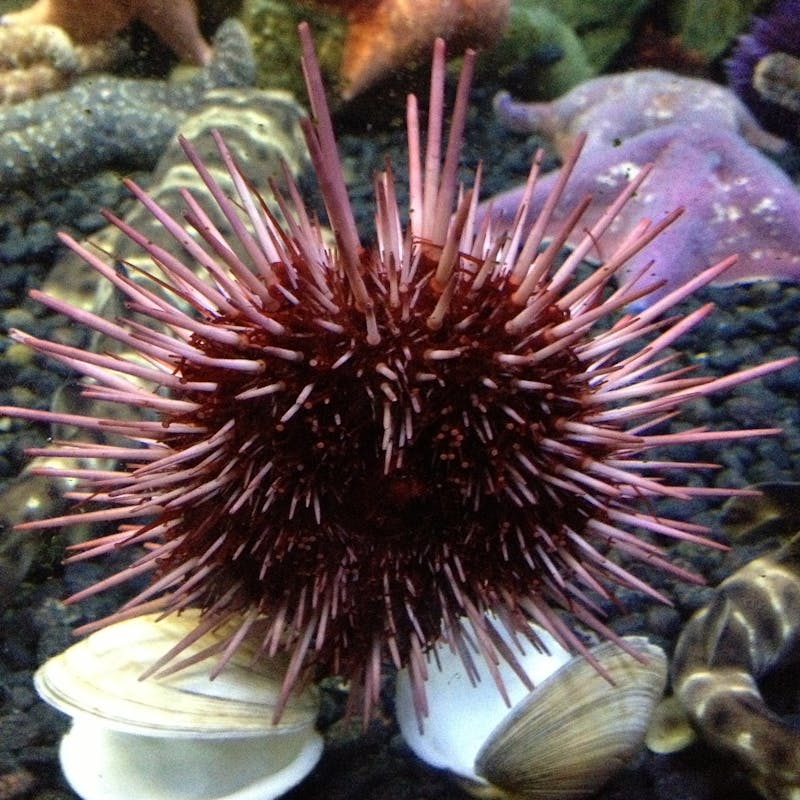
The blue-ringed octopus is by far the most beautiful species on this list. However, it is also one of the most venomous. This octopus is equipped with tetrodotoxin venom which will stop your breathing and is over 1,200 times more toxic than cyanide.
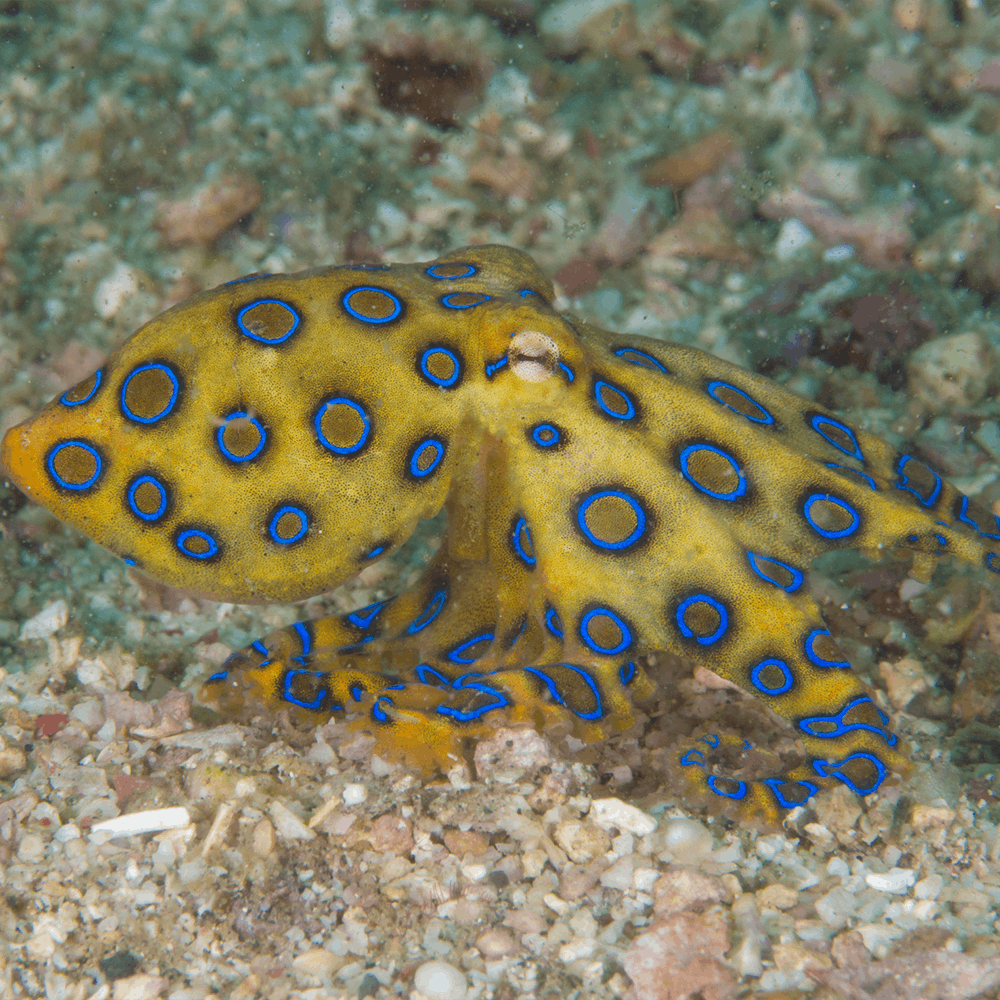
There is no antivenom for this venomous bite, so if you cannot get medical attention within minutes, your chances of survival are slim to none. The blue-ringed octopus carries enough venom to kill 26 humans within minutes.
Most bites from this octopus occur when they are handled or stepped on. So as long as you steer clear of them as best as you can, you should be alright. These octopuses grow to only a few inches in length, and because they are so small, you may not even feel their bite and won’t realize you’ve been bitten until your body begins to shut down. The blue-ringed octopus is the only known lethal octopus and inhabits the Pacific and Indian oceans primarily around the southern coast of Australia. Their reproductive process is also quite deadly due to the fact that the male will die immediately after mating, and the female will guard the 50-100 eggs with her life until she dies of starvation.
Box jellyfish are the most venomous jellyfish in the ocean, and one of the most venomous creatures in the entire world. The Australian box jellyfish is the largest species, growing up to 3 meters long. Their powerful venom attacks your nervous system and tissue cells leading to heart failure in typically less than 5 minutes. The pain alone has caused individuals to drown from shock or trigger heart failure. If you do survive the sting, the pain can continue for weeks, and even leave permanent scars.
Box jellyfish live primarily in coastal waters off Northern Australia and throughout the Indo-Pacific oceans. They are actually one of the most highly advanced jellyfish in the world. They’ve developed the ability to swim at a speed of up to 4 knots. And they have also developed eyes with sophisticated lenses. They are more common in the summer months, so if you are thinking of entering water where box jellyfish are common, either don’t enter, or wear protective gear such as a wetsuit, gloves, and boots.
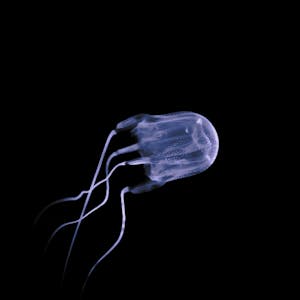
A reptilian species lurking in the water has venom similar to a cobra, but much more potent. There are 62 species of sea snakes lurking in the waters of the western Pacific and Indo-Pacific oceans. And although they are extremely venomous, you don't need to fear them.
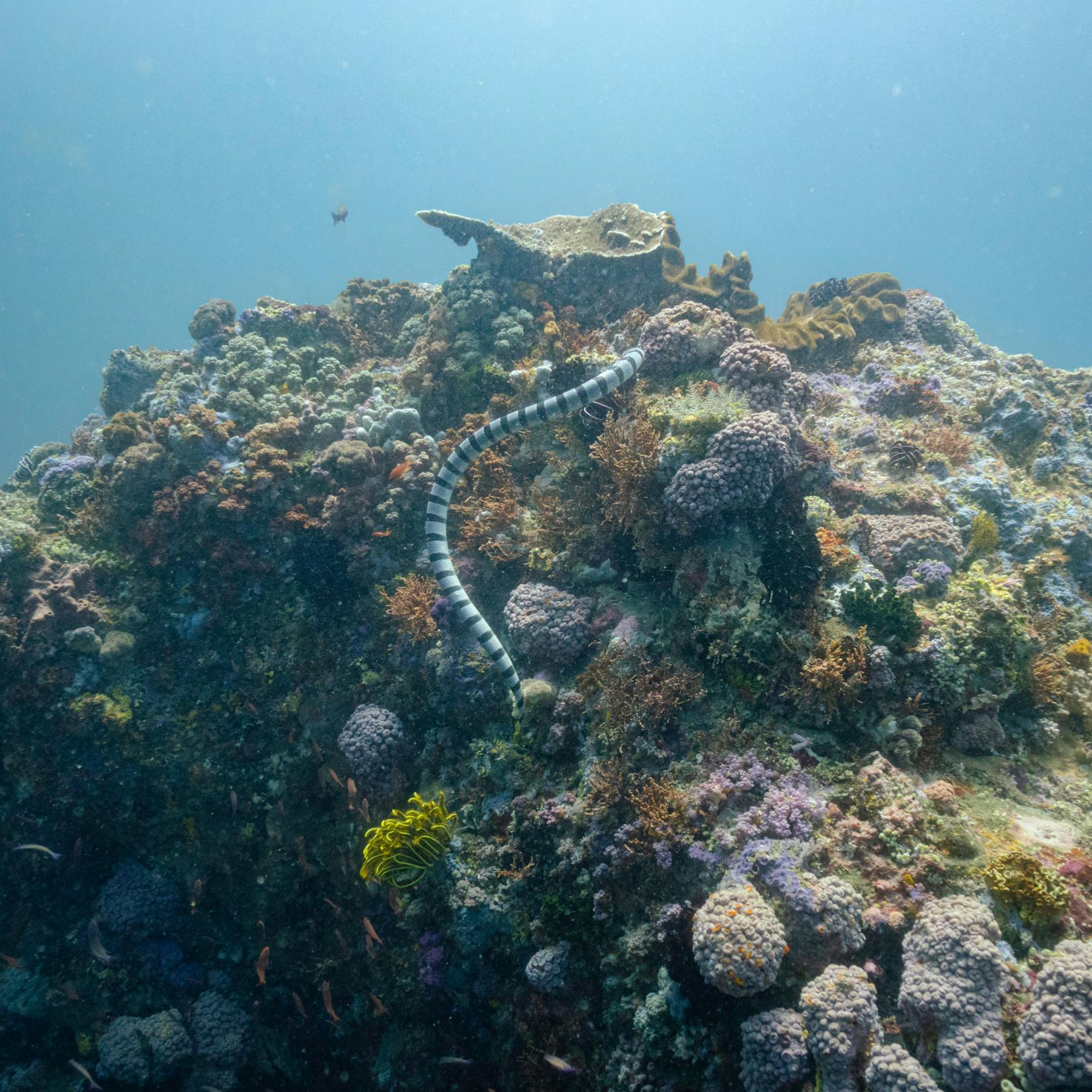
They are not aggressive and have very small mouths. Therefore, it is highly likely they wouldn't even be able to bite you if they wanted to. But that doesn’t mean it’s not possible.
Most adult sea snakes will grow up to between 3 and 5 feet long, but some can reach up to 9 feet long. Through evolution, they have developed flatter bodies than the snakes on land. They have also developed an oar-like tail, valvular nostrils, and elongated lungs that can extend the entire length of their body. With these lungs, they can breathe air at the surface, and then venture into the deep for several hours. One reason they can stay underwater so long is that they can actually breathe through their skin, filtering out oxygen from the surrounding water.
A creature that you would not think to be so deadly is the cone snail. With a beautiful shell, you would think to pick it up and take a closer look, but that could be a fatal mistake. These snails carry their own venom known as conotoxin. The effects on humans are thought to be serious, but are truly unknown. The cone snail attacks with the use of a harpoon-like tooth that shoots out of its proboscis. This is why most attacks occur when individuals either step on the snail, or pick it up.
If you are stung, you may experience extreme pain, numbness, and nausea. Muscle paralysis and respiratory failure can occur in severe cases, and it can kill you within minutes. There are many different species of Cone Snail, some more venomous than others. The Geographic cone snail is the most venomous, resulting in several human deaths every year. Currently, there is no antivenom available for a cone snail sting. So the treatment involves just trying to keep the victim alive until the toxins wear off.
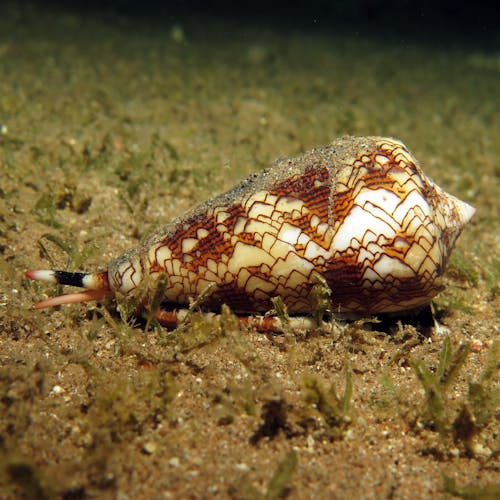
At the end of the day, none of these species are out to attack you. The majority of stings and bites occur by accident when the creature is just defending itself. Whether they are stepped on, improperly handled, or just spooked, they don’t want to hurt you. All of these species are important to the marine ecosystem. They each play a vital role in each of their own environments. Whether that role is preying on other species to help control the population or cleaning algae off of coral to prevent them from suffocating, they are each important in their own way.
Some species of sea snakes are extremely venomous. However, their fangs are very small, so it is unlikely they could even bite a human.
The most venomous creature in the ocean is the stonefish.
Yes, blue ringed octopuses do bite with their very small beak. Some cases imply that you may not even know you’ve been bitten.
Poisonous organisms will unload their toxins when you touch or eat them. Venomous organisms have to bite or sting you to inject their toxins.
The most venomous jellyfish is the Australian box jellyfish.